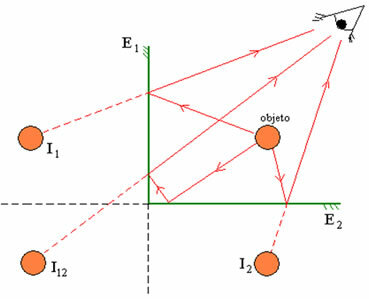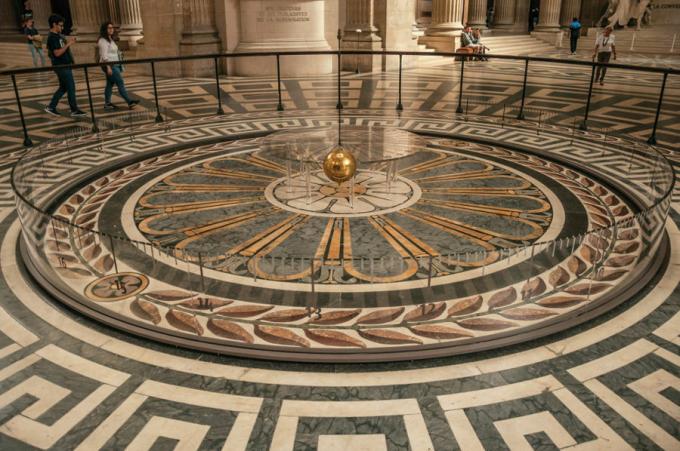We know that a plane mirror is a flat surface that reflects a light beam in a defined direction, rather than absorbing or scattering it in all directions.
In a plane mirror there is the formation of a single image, but if we use more than one plane mirror we can obtain the formation of multiple images from a single object.
Let's see the figure below where two plane mirrors are arranged to form a right angle, that is, a 90º angle between them.

Two mirrors at a right angle form 3 images of the object
We can see that each mirror will form an image of the object (I1 Hey2), plus an image of the image formed by the other mirror. This last image is formed at the same point by both mirrors (I12). The total number of images formed by this set of mirrors is 3.
To find out, that is, calculate the number of images formed by the association of two mirrors placed at an angle θ, we have the following equation:
Do not stop now... There's more after the advertising ;)
Where:
no → is the number of images
θ → is the angle formed between the two plane mirrors
If the angle between the mirrors is 60º, we will have the formation of 5 images. If the angle between the mirrors is 0º, we will have the formation of infinite images.
By Domitiano Marques
Graduated in Physics
Brazil School Team
Optics - Physics - Brazil School
Would you like to reference this text in a school or academic work? Look:
SILVA, Domitiano Correa Marques da. "Images of an Object Between Two Flat Mirrors"; Brazil School. Available in: https://brasilescola.uol.com.br/fisica/imagens-um-objeto-entre-dois-espelhos-planos.htm. Accessed on June 28, 2021.


